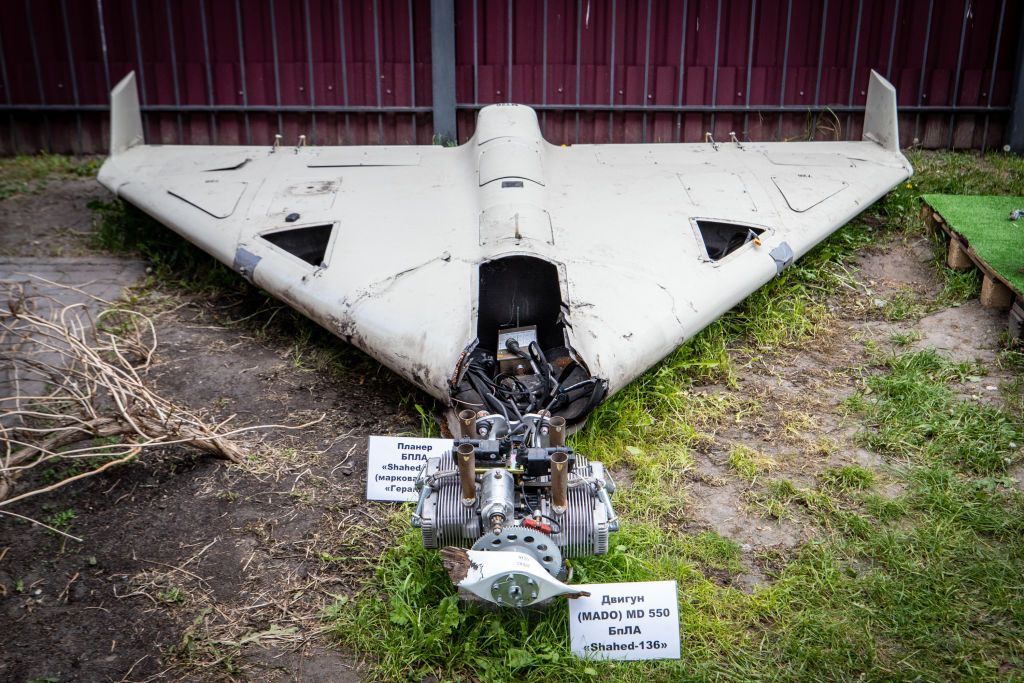Ukrainian air defense units successfully repelled a significant Russian drone attack targeting Kyiv on September 16. This marked the eighth aerial attack against Kyiv within the month, causing the Air Force to issue an aerial alert over the city. The attack involved multiple groups of attack drones launched from different directions, with air defense forces managing to intercept nearly two dozen unmanned aerial vehicles over the city’s airspace. Despite the intensity of the attack, there were no casualties or damage reported in Kyiv following the incident. This event comes after a previous drone strike on September 7 that damaged several residential buildings in the city. Additionally, Russia had engaged in devastating missile and drone attacks on other Ukrainian cities such as Poltava, Sumy, Lviv, and Kryvyi Rih in the first weeks of September.
In recent weeks, Ukraine has expressed optimism that its Western allies will allow long-range weapons to strike deep into Russian territory in response to the ongoing conflict. Ukraine has been facing continuous attacks from Russia, which has had the advantage of launching assaults from positions behind the border. This ability has allowed Russia to strike Ukraine with relatively little resistance, prompting Ukraine to seek support for more aggressive measures in defense. The hope is that Western allies will provide the necessary firepower to target key Russian locations and disrupt their military operations across the region. This potential shift in strategy could significantly impact the dynamics of the conflict and provide Ukraine with a stronger defense against Russian aggression.
The Russian drone attack on Kyiv on September 16 was part of a series of calculated assaults aimed at causing destruction and instilling fear in Ukrainian civilians. While the attack itself did not result in casualties or damage in Kyiv, it highlighted the ongoing threat posed by Russian forces and their willingness to engage in aerial warfare. The repeated attacks on Ukrainian cities demonstrate the severity and intensity of the conflict, with both sides engaging in strategic maneuvers to gain the upper hand. The ability of Ukrainian air defense units to successfully intercept a large number of drones showcases their readiness and effectiveness in protecting key urban centers from potential harm.
The escalation of drone and missile attacks in Ukraine reflects the evolving nature of modern warfare, where unmanned aerial vehicles play a prominent role in combat operations. The use of drones allows for precise targeting and strategic strikes on enemy positions, presenting a challenge for traditional defense systems. As seen in the case of the recent drone attack on Kyiv, air defense forces must adapt to new threats and develop advanced capabilities to counter these modern technologies effectively. Ukraine’s ability to fend off multiple drone attacks underscores the importance of continuous training and readiness in dealing with evolving threats in the conflict zone.
The international community closely monitors the situation in Ukraine, particularly in light of the ongoing conflict with Russia and the potential implications for global security. The support of Western allies for Ukraine’s defense efforts remains crucial in deterring further aggression from Russian forces and safeguarding the sovereignty of the Ukrainian nation. Strong diplomatic and military cooperation between Ukraine and its allies is essential in addressing the complex challenges posed by the conflict and securing a peaceful resolution. The resilience and determination of the Ukrainian people in the face of relentless attacks demonstrate their commitment to defending their country and preserving democratic values in the region. The ongoing conflict in Ukraine underscores the importance of international solidarity in standing against aggression and upholding the principles of freedom and sovereignty for all nations.


